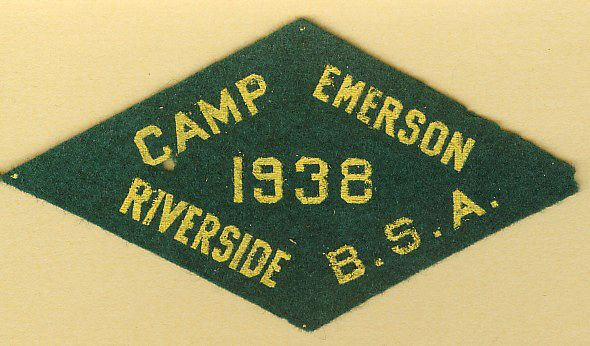Boy Scouting began in Riverside County when Scoutmaster Wilford Taylor lead the chartering of Troop 1 in the Young Mens’ Christian Association, Riverside, on March 1, 1912 (Early Scout Troops were mostly started by the YMCA). Over the years he organized other troops in the City of Riverside. Taylor also led the chartering of a second-class Riverside Boy Scout Council on August 28, 1918, with Carl J. Carlson, President, Ira Landis (later Superintendent of Schools) Vice-President, and Wilford Taylor as Commissioner. This latter was the highest executive office in a second-class Council. Charles Van Fleet (CDF Ranger, Hemet) was the driving force behind the chartering of a second-class San Jacinto-Hemet Council at about the same time.
In 1919, C.L. Emerson granted permission for troops from the Riverside and San Jacinto-Hemet Councils to camp on Gray’s Meadow, located where the road to Idyllwild crossed Strawberry Creek as it entered the village, and later became the Idyllwdil Pines Camp. Emerson was a former banker in San Jacinto who had begun the purchase of the Idyllwild Inn in November 1917, and became President of Idyllwild Incorporated, a real estate development with 1000 acres.
Alfred C. Fulmor D.O. clearly remembered the night in 1919 at a campfire during that first camp when Mr. Emerson announced he was going to donate a much better and larger area downstream as a permanent campsite for the Scouts. He especially remembered the whoops, hollers, whistles and cheers of the boys when they heard it.
Fulmor was a Cub Scout, age 10, with T-4, Riverside. That first contingent had been driven in two stakebed trucks from Riverside to Oak Cliff, and then hiked up the Idyllwild Control Road to camp. Their camping gear was trucked up. Scout Fulmor was very familiar with that road because his father, A.C. Fulmor (who became Riverside County Surveyor in 1914) had surveyed the route in 1907 with J.F. (Toots) Davidson. Young Fulmor’s father had driven him up and down it many times.
For that first Council camp in 1919, C.J. Carlson (Chief of Police in Riverside during WW I and until January 1920), was still Riverside Council President, and Wilfred Taylor, Commissioner, was the Camp Director; Mrs. Elmer Deiss (her husband would become the Chief of Police following C.J. Carlson), was camp cook; Clarence Hibbard was woodcutter and assistant cook; Clyde Searl T-6, age 14, was Senior Patrol Leader. Other Scouts who Fulmor remembered was Louis Goslin Jr. T-3, Percy Warner T-3, Floyd Searl T-6, and Raymond Deniss T-4, who was also a 10 year-old Cub Scout like Fulmor.
The first of many “snipe hunts” to be held over later years was remembered by Fulmor. He and Deiss were left out with a sack. Unbeknownst to the older boys, these two had sneaked back to their tent and were sound asleep long before they were discovered by their leaders who had searched for them after they feared they had become lost. Dr. Alfred Fulmor practiced medicine in Riverside and participated in the Diamond Jubilee Celebration.
The major hike into the back country on that the first two-week encampment was from Idyllwild up the Devil’s Slide Trail, then across country to the base of Lily Rock (later known to rock climbers as Tahquitz Rock), around to the right and up to the top of the rock. This became known as the Descent Trail by climbers who topped out on any of the 148 named climbs on Lily, and the most climbed rock in the U.S.
